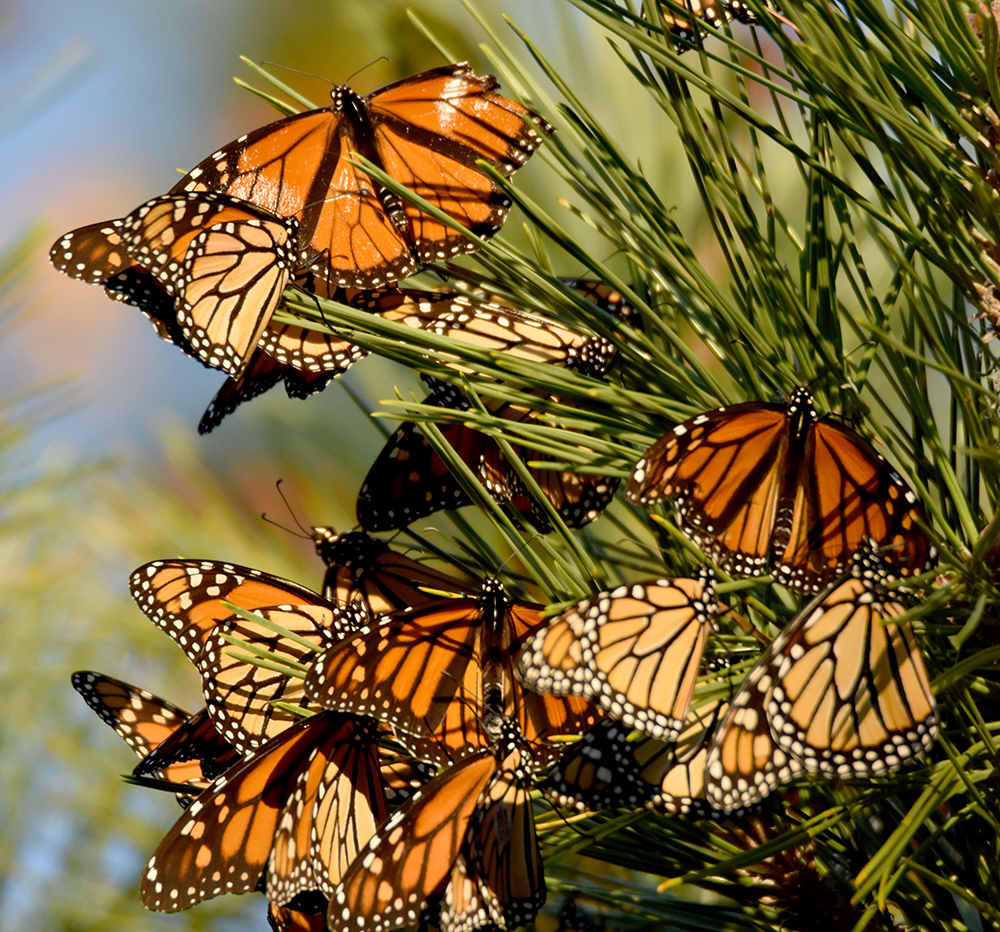By Steffen Klenk
South Jersey sits along one of the most captivating flyways for migratory species. Fall provides a perfect time to witness what nature has to offer. Whether that means visiting a state park or nature observatory, you are almost certain to witness something special.
Our region has seen an increase in the number of monarch butterflies in recent weeks, but these beautiful creatures will not stay very long. With their migration season under way, groups such as the Cape May Bird Observatory (CMBO) have been keeping an eye on monarch activity.
Program Coordinator Adehl Schwaderer told Shore Local there have been several small roosts observed in Cape May Point so far this October, with even larger numbers witnessed prior to Tropical Storm Ian.
“There is still a chance that we could see a large push of monarchs within the next week or two,” Schwaderer said.
Witnessing a monarch roost in Cape May Point is arguably one of the most spectacular scenes in nature. The butterflies typically roost upside-down in pine or fir trees.
Because monarchs are most vulnerable to predators while resting, it is vital that they blend in with their surroundings. Pro tip: if you ever witness a roost at sunrise, bring your camera and prepare for a spectacular view of them taking flight as their wings are warmed by the sun.
Before these magnificent creatures fly south, observers at the New Jersey Audubon’s Nature Center in Cape May are tagging monarchs under a project that took shape more than 30 years ago. The Monarch Monitoring Project (MMP) was initiated in 1990 by Dick Walton and Lincoln Brower. The duo noticed how monarchs were gathering in large numbers in Cape May during the fall and began tallying the population.
Each tag is circular and comes with its own unique ID for tracking and monitoring movement. They weigh approximately 10 mg. For comparison, a typical monarch weighs 500 mg.
To not interfere with flight, each tag is gently placed along the underside of its hindwing. If you spot a tagged monarch, data may be submitted to the University of Kansas Monarch Watch online at www.monarchwatch.org.
On any given day, with optimal wind speed and thermals, the average monarch will travel upwards of 80 miles. But it is not uncommon for them to travel farther. Here is an interesting statistic: according to the Cape May Bird Observatory, one monarch that was tagged in Cape May was recovered three days later in Harlem, Ga., 588 miles away!


Most monarchs migrating through our area will end their trek nearly 2,000 miles away, high in the mountains of Michoacan, Mexico. Sitting 10,000 feet above sea level, the lush greenery, coolness, and damp climate provide the perfect setting to sustain them through the winter.
While most generations of monarchs live only one month or so, the “super generation,” born each fall, can survive for up to seven months.
While many people are fortunate enough to witness part of this incredible journey every year, there is growing concern about the greatly declining monarch population in recent years. Factors, such as an ever-changing climate and weather conditions, loss of habitat, toxic pesticides, and predators have greatly affected their viability.
In July, the International Union for Conservation of Nature (IUCN) added the migratory monarch butterfly to the organization’s Red List of Threatened Species. While they are classified as a species of concern, the U.S. Fish and Wildlife Service (USFWS) may consider adding the monarch to its Endangered Species List for broader protection; however, that assessment will not be made until 2024.
Schwaderer stresses that more awareness is needed to ensure their survival. “We should be doing as much as we can to help them, but they’re not protected by any of the laws of other species that are (already) included,” she said.
In the meantime, there are various ways people can ensure the survival of the species. Planting native milkweed during the fall is one way to start. Goldenrods, thoroughworts, and native asters are also recommended, as these can provide monarchs with much-needed nectar for their travels. Even plants that are native to Mexico, such as lantanas or zinnias, can be beneficial.
Jack McDonough, monarch field naturalist at the CMBO, stresses that more plant life would contribute to positive outcomes.
“Imagine if everybody had native plant gardens, how much habitat that would add back, how much diversity that would increase, and how much carbon would be collected,” McDonough said.
The Monarch Monitoring Project estimates that they tag just over 3,000 butterflies in Cape May between late August and early November. Dedicated staff continue to conduct vital research and educational programs to not only increase awareness of the species, but also to better understand their behavior and where these magnificent creatures are going.
Additional information on the project and up-to-date resources are available online at njaudubon.org/monarch-monitoring..
Photos by Steffen Klenk
Steffen Klenk is a multimedia journalist. He resides in Ocean City and enjoys capturing the eclectic moments of shore life.










